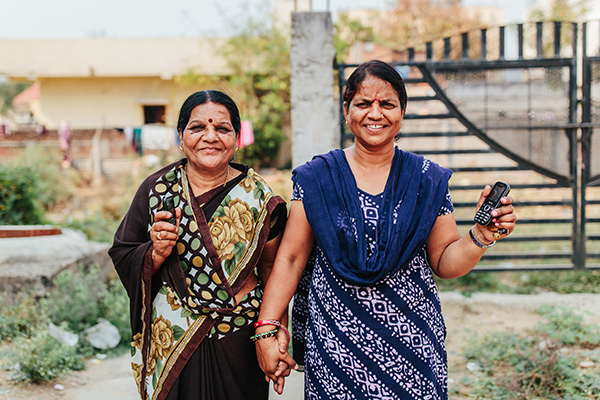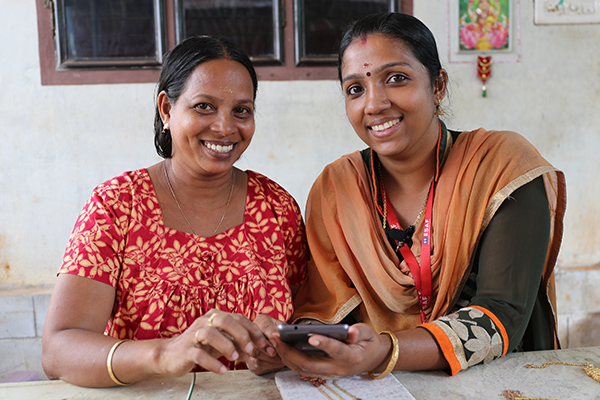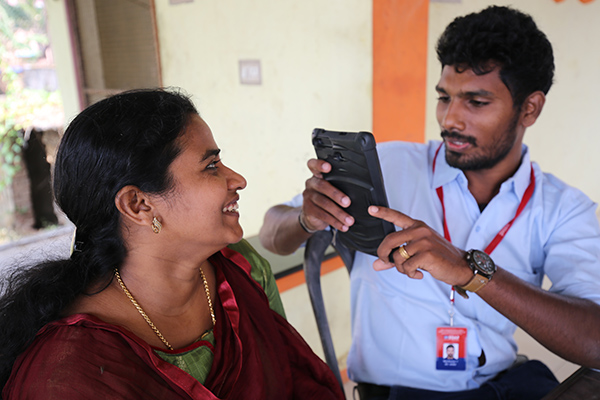Finding a needle in a haystack

In August 2018, the Indian state of Kerala endured the worst flooding in a century. Around 500 people lost their lives while more than 1 million were evacuated from their homes. They returned to widespread destruction.
On the anniversary of last year's deluge, Kerala is once again enduring catastrophic flooding, with floodwaters washing away homes and livelihoods, leaving families stranded.
For families struggling in the aftermath of a natural disaster, accessing funds is key to rebuilding their homes, businesses and lives. But the time taken to assess loan applications can further increase what is already a precarious situation without income.
Chris Murdoch, Opportunity International Global Chief Strategist and Asia Programs Director, explains how ‘big data’ is helping families rebuild their lives immediately after a natural disaster strikes.
“Imagine trying to find a needle in a haystack – while that haystack is on fire,” Chris says. “That’s the challenge our microfinance partners are working through in the aftermath of natural disasters like the recent flooding in Kerala, India. They need to assess large numbers of urgent loan applications to find the families who can genuinely use a small loan to recover from the crisis and lift themselves out of poverty.”
Imagine trying to find a needle in a haystack – while that haystack is on fire. That’s the challenge in the aftermath of natural disasters.
Today’s digital world means more and more data is being created and collected on each of us – including families living in poverty. As our program partners are moving to digital systems, they’re gathering an increasing amount of information about each of their clients. Data scientists harness the power of all this data–big data– with clever algorithms to gain new insights into the people we’re serving.
“Applying big data to assessing loans is like tackling that haystack with a powerful magnet – instead of sifting through the pile, the families that need a loan come to the surface and can get on with building their businesses and caring for their families,” Chris says.
 Renju, an ESAF Loan Officer, processing a small loan client’s repayment.
Renju, an ESAF Loan Officer, processing a small loan client’s repayment.
ESAF Small Finance Bank is Opportunity’s largest microfinance partner in India and reaches over 2.13M families with small loans across the country. The majority are in ESAF’s home state of Kerala.
“In the immediate aftermath of the flooding, ESAF heard a common story from clients – they all wanted to get back on their feet as fast as possible,” Chris says.
But at the time of the flooding it would typically take around 60 days for a family to apply for and receive a small loan – and “waiting two months for loan funds meant two months without income and losing customers and market share."
Thus came ESAF’s vision of getting loan funds to clients within a few days. They engaged data scientists to develop software to rate a client’s loan history – and combine it with software to determine if a client is an acceptable loan risk.
Waiting two months for loan funds means two months without income.
The new model reduced the 60-day wait to two-days. ESAF has since refined the software and loan officers can now assess loans using an Android tablet in just 15 minutes.
“This is a phenomenal outcome for families living in poverty who can now get on with building their businesses without delay,” Chris says. “For ESAF, more efficient processes mean staff can focus on clients who need additional support, and a more sustainable operation means reaching more families living in poverty in more places.”
 Small loan client Bindu’s identity is confirmed by an ESAF loan officer, who takes a photo of her iris with his tablet.
Small loan client Bindu’s identity is confirmed by an ESAF loan officer, who takes a photo of her iris with his tablet.
This pioneering approach is paving the way for other new ways of thinking and working. For example, ESAF’s digital team are already looking into using behavioural science to improve processes for loan clients. Meanwhile, Urwego – an Opportunity Network program partner in Rwanda – has integrated data analytics with demographic and psychometric data. One finding was that the previously held belief that older widows in rural areas were a high credit risk, was false. Instead, the data showed that this group was actually the lowest risk group.
Another key area will be integrating third party data such as weather information to help predict and pre-empt the next flood or drought.
“We don’t know exactly what the future holds," says Chris. "But with the knowledge data analytics can bring, our partners are prepared to be smart about using their limited resources best so that families can access the tools they need, when they need them – and break the cycle of poverty for good."